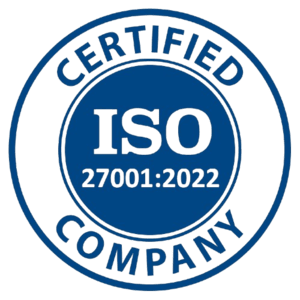
This comprehensive guide will examine a few powerful instances of goals and objectives for virtual events, guiding you on how to accomplish them correctly.
1. Virtual Event Goals and Objectives
Prior to delving into particular instances, it’s important to understand the significance of goal-setting for virtual events.
Broad, overarching objectives that specify what you hope to achieve with your event are called goals. Conversely, objectives are precise, quantifiable results that help you reach your goals.

There are various reasons to establish specific goals and objectives:
- Provides direction and focus for event planning
- Helps in allocating resources effectively
- Enables measurement of event success
- Guides decision-making throughout the event process
- Facilitates alignment among team members and stakeholders
2. Types of Virtual Event Goal

1. Audience Engagement Goals
Among the top priorities for virtual event planners is frequent attendee engagement. Maintaining guests’ active participation in virtual environments can be more difficult than in real-world events.
Examples of audience engagement goals include:
- Compared to prior events, increase audience involvement in Q&A sessions by 30%
- Throughout the event, maintain an average session attendance rate of 75%
- Aim for 45 minutes of average attendee dwell time every session
2. Lead Generation Goals
For many businesses, virtual events serve as powerful lead generation tools.
Goals in this category might include:
- Generate 500 qualified leads from event registrations
- Collect contact information from 80% of attendees for follow-up marketing
- Achieve a 10% conversion rate from event attendees to sales calls
3. Brand Awareness Goals
Virtual events can significantly boost brand visibility and recognition. Strategies for branding include, for example:
- 50% more brand mentions on social media throughout the event time
- Ten thousand views of the branded material that was shared during the event
- Improve brand sentiment scores by 20% among attendees post-event
4. Educational Goals
For events focused on learning and development, educational goals are paramount.
These might include:
- Make sure that 90% of participants say they have learnt one new skill or idea
- Attain a 70% average rate of knowledge retention for participants
- A 25% increase in the number of attendees pursuing additional training or certification
5. Networking Goals
One common objective of virtual events is to facilitate connections among participants.
Examples include:
- Facilitate at least 5 meaningful connections per attendee during the event
- Achieve 1,000 messages exchanged on the event networking platform
- Ensure 50% of attendees participate in at least one breakout networking session
6. Revenue Generation Goals
For paid events or those with sponsorship components, financial goals are crucial:
- Make $100,000 from the sale of tickets
- Obtain sponsorships worth $50,000 in total
- Achieve a 20% increase in product sales during the event period
3. Setting SMART Objectives for Virtual Events
Although goals offer a broad direction, objectives must be more precise and quantifiable.

The SMART framework is a useful instrument for establishing goals.
- Specific: Clearly define what you want to accomplish
- Measurable: Establish concrete criteria for measuring progress
- Achievable: Set objectives that are realistic given your resources and constraints
- Relevant: Ensure objectives align with your overall goals and mission
- Time-bound: Specify a timeframe for achieving the objective
Let’s convert a few of the previously stated goals into SMART objectives to aspire towards:
1. Objective for Audience Engagement: Boost attendance during Q&A periods
SMART Objective: By the end of our two-day conference, we want to have at least 50 questions per session, a 30% increase in questions submitted during Q&A sessions over our previous virtual event.
2. Lead generation aims to produce qualified leads from event registrations
SMART Objective: Within a week after the event, obtain the qualifying information from 500 prospective customers who meet our target demographic. This will produce 100 qualified leads who are prepared for further sales interaction.
3. Objective Goal for Brand Awareness: Boost brand mentions on social media
SMART Goal: Throughout the three-day event, generate 1,000 unique mentions on social media using our event hashtag on Instagram, with at least 70% of mentions expressing positivity.
4. Educational Objective: Ensure that participants acquire new abilities
SMART Objective: Gather data immediately following each event session to determine whether attendees learn at least one new, applicable concept. Aim for a 90% positive response rate on these post-session questionnaires.
5. Networking Objective Goal: Promote meaningful connections between attendees
SMART Objective: Using the networking tool analytics of the virtual event platform, enable each attendee to take part in a minimum of three one-on-one video networking sessions with other attendees during the event.
6. Income Generation Objective Goal: Increase income from ticket sales
SMART Objective: Sell 1,000 virtual event tickets for $100 each by the early-bird deadline, which is two weeks before the event start date, to generate $100,000 in revenue.
4. Strategies for Achieving Virtual Event Objectives
Creating strategies to reach your SMART goals is essential after you’ve established them.

Here are a few strategies that correspond with the goals we’ve spoken about:
1. Enhancing Audience Engagement
- Implement interactive polls and surveys throughout sessions
- Use gamification elements to encourage participation
- Offer incentives, prizes or recognition for active participants
- Ensure virtual event speakers are trained in virtual presentation techniques
- Offer an intuitive platform with simple-to-use engagement features.
2. Boosting Lead Generation
- Create valuable gated content that requires registration
- Offer exclusive access or perks for providing additional information
- Use AI-powered chatbots to qualify leads during the event
- Implement a lead scoring system based on attendee behavior
- Provide targeted content and sessions based on attendee profiles
3. Increasing Brand Awareness
- Develop a cohesive brand identity for all event materials
- Create shareable content that attendees can easily post on social media
- Partner with influencers or industry leaders to expand reach
- Host a virtual photo booth with branded frames or filters
- Offer branded virtual backgrounds for video sessions
4. Enhancing Educational Outcomes
- Provide pre and post-event assessments to measure learning
- Offer different learning formats to cater to various learning styles
- Include hands-on workshops or simulations for practical application
- Provide downloadable resources and summaries for each session
- Offer post-event access to recorded sessions for review
5. Facilitating Networking
- Use AI-powered matchmaking to suggest relevant connections
- Create themed networking rooms or breakout sessions
- Organize virtual round tables or discussion groups
- Implement a virtual business card exchange system
- Host structured networking & engagement activities like games
6. Driving Revenue Generation
- Implement tiered pricing strategies with early-bird discounts
- Offer group discounts to encourage team participation
- Create VIP packages with exclusive content or access
- Develop sponsorship packages with clear value propositions
- Integrate product demonstrations or exclusive offers into the event program
5. Measuring Success: Key Performance Indicators (KPIs) for Virtual Events
Track pertinent Key Performance Indicators (KPIs) to ascertain whether you’ve met your goals.

Here are some examples aligned with our previously discussed objectives:
1. Audience Engagement KPIs
- Number of questions submitted during Q&A sessions
- Average session attendance rate
- Average attendee dwell time per session
- Number of poll responses or survey completions
- Chat activity levels (messages sent per attendee)
2. Lead Generation KPIs
- Number of registrations
- Number of qualified leads generated
- Lead-to-opportunity conversion rate
- Cost per lead
- Registration form completion rate
3. Brand Awareness KPIs
- Social media mentions and impressions
- Hashtag usage
- Share of voice compared to competitors
- Brand sentiment analysis
- Website traffic from event-related sources
4. Educational KPIs
- Knowledge retention rates (measured through assessments)
- Attendee satisfaction scores for educational content
- Number of certifications or credits earned
- Post-event application of learned concepts (follow-up surveys)
- Attendance rates for educational sessions
5. Networking KPIs
- Number of connections made per attendee
- Total messages exchanged on networking platforms
- Attendance at networking sessions or breakouts
- Post-event follow-ups between attendees
- Satisfaction scores for networking opportunities
6. Revenue Generation KPIs
- Total ticket sales revenue
- Average revenue per attendee
- Sponsorship revenue
- Upsell or cross-sell revenue from event-related offers
- Return on Investment (ROI) for the overall event
6. Overcoming Challenges in Achieving Virtual Event Objectives
Setting and achieving goals is important, but there are particular difficulties with virtual events.

The following are some typical roadblocks and their corresponding solutions:
1. Technical Issues Challenge: Learning objectives and engagement can be undermined by platform crashes, poor audio/video quality, or connectivity issues.
Solution: Carry out extensive testing, provide guests clear technical instructions, and have a specialized technical support staff and back ups handy the entire time the event is taking place.
2. Attendee Distraction Challenge: It’s simple for attendees to multitask or become distracted in a virtual setting.
Solution: Use engaging presentation techniques, interactive elements, and frequent breaks to maintain attention. Consider shorter sessions with more dynamic content.
3. Time Zone Differences Challenge: Global audiences may struggle with live session timing, affecting engagement and networking objectives.
Solution: Offer recorded sessions, create networking opportunities that span different time zones, and consider hosting key sessions multiple times to accommodate various regions.
4. Networking Limitations Challenge: The lack of in-person interaction can make networking feel forced or awkward.
Solution: Provide a variety of communication channels (text, voice, and video) to accommodate varying preferences; use AI-powered matchmaking; and design structured networking activities.
5. Data Collection and Analysis Challenge: It can be difficult to track and analyze data from online platforms.
Solution: Select a virtual event platform with strong analytics features, pre-define important metrics, and use integration tools to combine data from various sources.
6. Sponsor and Exhibitor Value Challenge: It might be challenging to show sponsors and exhibitors how their money is being spent in a virtual setting.
Solution: may be to develop unique virtual booth experiences, provide customized attendee data, and give sponsors the chance to host branded sessions or material.
7. Innovative Approaches to Virtual Event Objectives
Novel and innovative methods of establishing and accomplishing goals are emerging as virtual events keep developing.

Here are some innovative suggestions to think about:
1. Hybrid Events
Blend virtual and in-person components to accommodate varying attendance preferences and increase your event’s reach while preserving the advantages of in-person contact.
2. Virtual Reality (VR) and Augmented Reality (AR)
Use VR or AR components to produce immersive experiences presenting distinctive sponsorship opportunities.
3. AI-Powered Personalization
Utilize artificial intelligence to personalize every attendee’s event experience, including networking and content recommendations.
4. Micro-Events and Content Atomization
Break larger events into a series of smaller, focused sessions spread out over time to maintain engagement and facilitate better knowledge retention.
5. Gamification and Virtual Rewards
Implement game-like elements and virtual rewards to incentivize participation and achieve multiple objectives simultaneously.
6. Continuous Engagement Models
In order to accomplish long-term goals, extend the event beyond its predetermined duration and establish year-round communities and touchpoints.
Conclusion
Any virtual event must have well-defined, quantifiable goals and objectives in order to be successful. You can build virtual experiences that truly benefit attendees, sponsors, and your organization by knowing the kinds of goals that are pertinent to your event, creating SMART objectives, putting successful methods into practice, and monitoring the appropriate KPIs.
Keep in mind that the world of virtual events is always changing, so being flexible is essential. Reevaluate your goals on a regular basis, remain receptive to new ideas and methods, and prioritize the needs of your audience in all of your planning.
Through the application of the concepts and strategies covered in this guide, you will be well-prepared to establish, pursue, and accomplish significant goals for your upcoming online event.
A deliberate approach to goal-setting will pave the road for virtual event success, regardless of your objectives: enhancing virtual event engagement, generating leads, raising brand awareness, facilitating learning, fostering networking, or driving income.
FAQ
Increasing brand recognition, interacting with a target audience, producing leads or sales, offering instructional content, and encouraging networking possibilities are typical objectives for virtual events. Every event will have distinct goals depending on its audience and purpose.
Use the SMART criteria (Specific, Measurable, Achievable, Relevant, and Time-bound) to develop effective targets. Creating “100 new leads by the end of the event through networking opportunities” is one example of an event goal.
Ensure your virtual event’s objectives align with overarching corporate goals, including forming alliances. If your company wants to grow into new markets, for example, designate goals for the event to interact with prospective clients in those areas.
Some strategies are to use interactive formats and interesting material (such as live polls or breakout sessions), to successfully promote the event through a variety of media, to use technology to ensure a smooth execution, and to have calls to action that are obvious. Furthermore, gathering comments and conducting follow-ups after the event can aid in evaluating and accomplishing the goals.




























